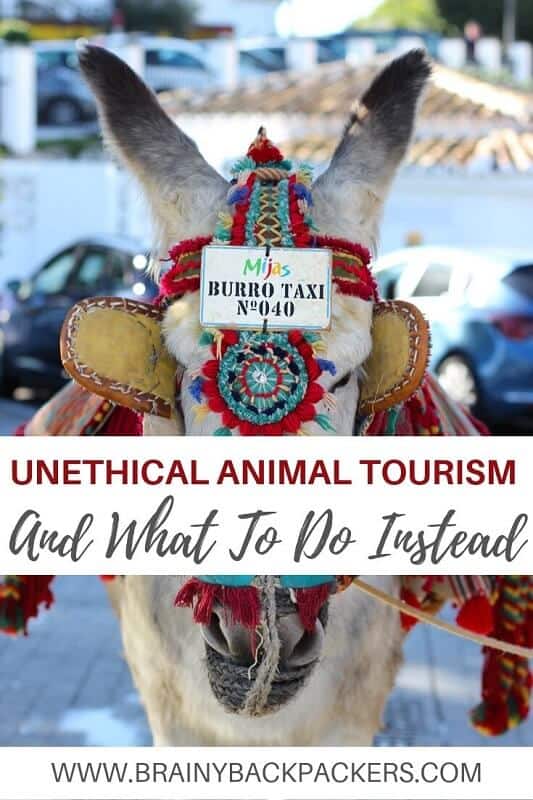Animal tourism has been a part of travel as long as I know. Animals suffer more and more as numbers of travelers increase in the world. Traveling is more accessible than ever with 1.4 billion people traveling in 2018 according to World Tourism Organization. Even though there is an increasing knowledge by travelers on unethical animal tourism today, there are still too many who unknowingly participate in such activities.
According to World Animal Protection, more than half a million wild animals are used for tourist entertainment. And these are only the registered animals in venues. What about all those monkeys, snakes, tarsiers, sloths, llamas, camels, donkeys (and I could keep going) that private people use to earn some extra income from tourists?
Personally, I have had a long number of unethical animal experiences while traveling. I certainly wish I had been more educated at an earlier stage, but as I can’t change what I’ve done, I will do my best to help others avoid the same mistakes. That’s why I will share a series of posts covering unethical animal tourism and what to do instead.
To make this topic as broad and educational as possible I have partnered up with a number of experienced responsible travelers and animal lovers who also have learned the hard way, just like me.
We all think it is important to highlight that it is ok if you make a wrong choice in good belief. On the other hand, when you learn the real consequences of your action it is incredibly important to share your knowledge with everyone around you. This way you can prevent others from doing the same thing and finally make a difference for the animals.
Together, we will do our best to highlight a large number of unethical animal tourism activities around the world throughout a series of posts, this being the first one.
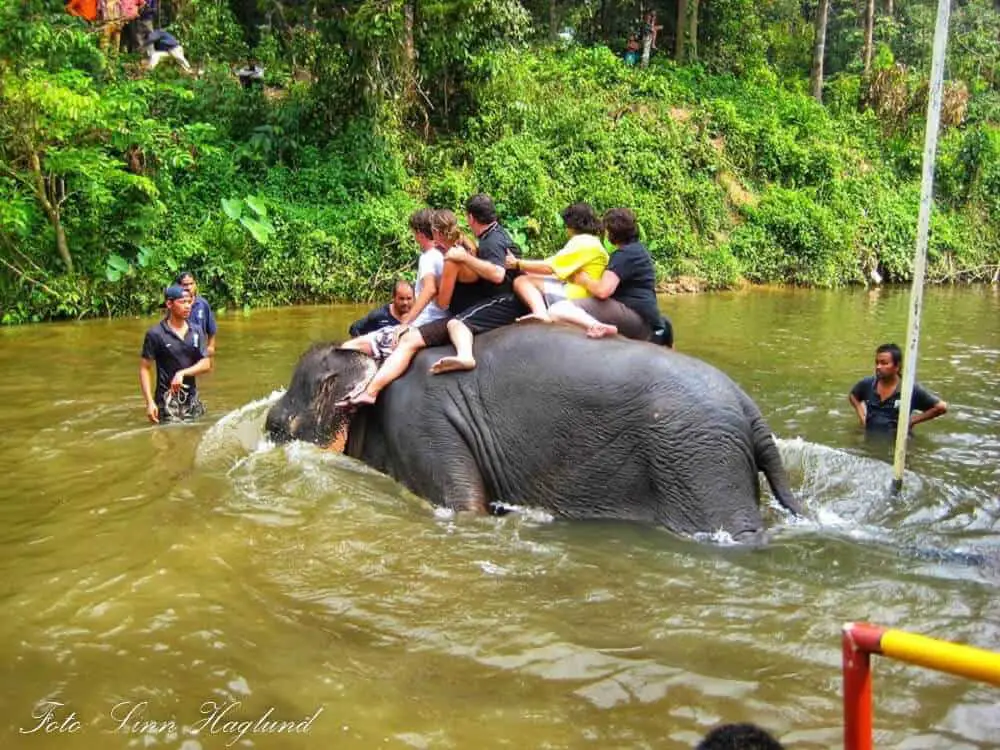
MAKE A DIFFERENCE!
Plant trees to create habitat for animals from the convenience of your home
What is unethical animal tourism?
Unethical animal tourism is any situation where animals are exploited to the economical benefits from tourism.
Often, the tourists won’t see that the animals are maltreated.
However, zoos and entertainment with animals that usually live in the wild are quite obviously unethical. Yet, hundreds of thousands of tourists are lured into activities like these each year.
Why is that?
Is it intriguing marketing and Instagram making it look ethical? Is it “ethical” tour companies making it seem like a cultural experience?
Most people will stay away from a circus with animals nowadays. When I was a kid, in the 80s, it was the most normal thing in the world! I couldn’t even imagine a circus without elephants. Dumbo was my hero! I still remember how excited I was as a child being allowed to the back of the circus to see the elephants up close.
A few weeks ago, they set up a circus near my home and I was horrified until a colleague checked it up and confirmed there are no animals in the circus.
This shift in consciousness is starting to arise around elephant riding and tiger temples in Thailand. Can we make a shift for all animal tourism?
You know, we are the market. And we decide where we want to put our money. We also know that once we don’t put our money on an unethical activity, there will be a change towards the better as new ethical activities pop up instead.
People earning an income on unethical animal tourism will look for a different way of earning money once the market they serve is gone.
We see it within elephant tourism in Thailand already. What we need to do now is to make sure we are not trusting the lies we are told. Read on to find out more about misleading (un)ethical animal tourism.
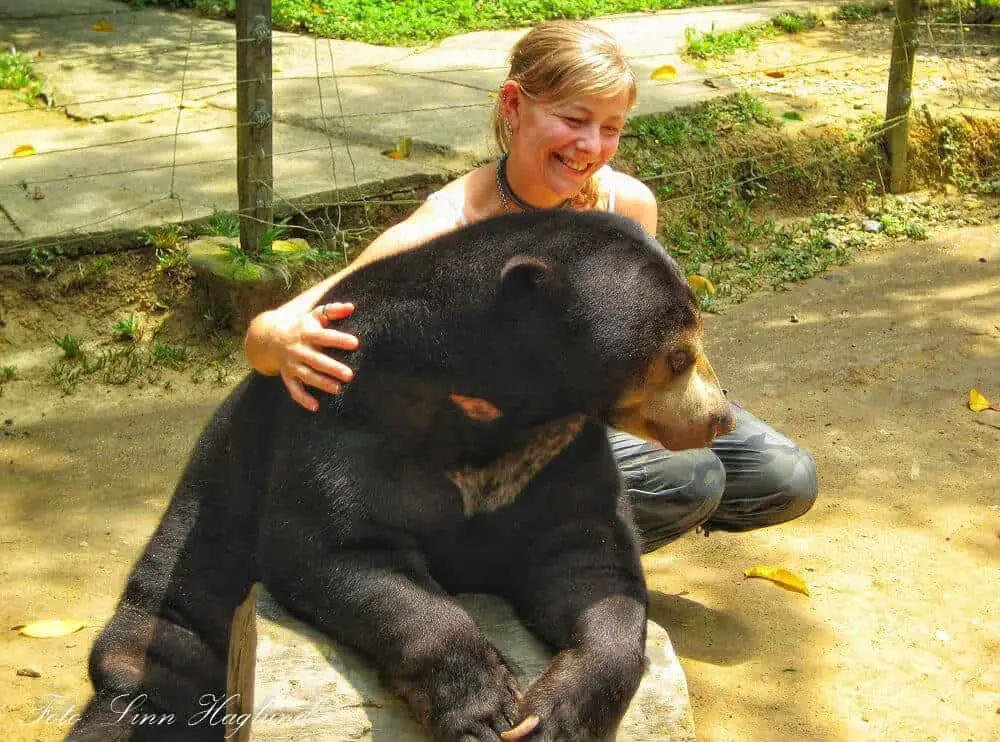
How can you know if animal tourism is ethical?
It isn’t many years since I rode an elephant the last time and thought it was ethical (the sanctuary seemed totally legit!). It isn’t that long ago since I carried around on a sloth and thought it was ok either. It isn’t that long since I went on a desert camel safari without giving it a thought if it was ethical or not. It was the thing to do while in Rajasthan.
Just this year, a friend of mine said she wanted to ride a camel in Morocco and another friend wanted to ride an elephant in India. They both love animals.
Honestly, it isn’t that many years since I woke up one morning and realized that NO animal tourism is ok. If I want to experience wildlife, I should visit their natural habitat and observe them from a safe distance where I don’t interrupt them. Of course, there are ethical animal sanctuaries, but I will get back to that later.
However, it is not fair to expect that everyone knows what is ok or not. The tourism industry packs in everything perfectly and makes it look like cultural experiences enhancing the local economy and ethical animal interactions with wild animals. Animal sanctuaries seem perfectly legit while they are not.
Even the volunteering industry is luring well-meaning volunteers to feed a deadly breathing industry where wild animals are kept only for the well-paying tourism industry.
No wonder travelers still participate in these activities!
No one can expect that travelers will know what is ethical or not unless they are educated.
But once again, how can we know what is ok and what isn’t?
I will go deeper into this.

How do you avoid unethical animal tourism?
How often are we as tourists told that an animal attraction is ethical with heartbreaking stories? And how often are these just polished truths to look good? Do we ever see the dark side of the attraction?
- Do we ever question the real needs of that animal?
- Do we ever question that animals are fed human or cooked food?
- Do we ever question a nocturnal animal posing for photos in the daytime?
- Do we ever question why a wild predator let us pet it?
- Do we ever question how these animals were trained?
- Do we ever question where the money we pay to see these animals really go?
- Do we ever question if these animals were bred to our amusement?
- Do we question what happens to these animals once they are not apt to interact with tourists?
You have to be critical to the information you get!
Before you go on a trip and decide whether to attend an activity including animals or not, make sure you do your research. And do it well. You can ask your tour company how they stand when it comes to animal tourism and where they draw the line when it comes to collaborations. But don’t underestimate the power of Google. You will find both positive and negative comments on a venue. Don’t be afraid to look further than the first page of Google. There might be smaller sites that have newer content about the place that is relevant for your choice.
For me, if I see only one negative review which has good reasoning why I shouldn’t go, that’s enough. Whenever I’m in doubt there is only one answer. Why risk the well-being of the animals?

Animal tourism to avoid and what to do instead
According to the tour operator Responsible Travel, you should stay away from tours that include zoos or wildlife parks. Further, they advise you to stay away from any animal performance, animal rides, wildlife selfies, and all sorts of cuddling, holding, or playing with wildlife.
This is backed up by World Nomads. The responsible travel insurance company emphasizes how feeding, handling, and keeping wildlife captive make the animals depend on humans for survival and they lose their natural, wild instincts.
Have you thought about how wildlife can be sensitive to human disease through handling?
I have listed up the most important things to avoid so you can be a mindful traveler when it comes to animal tourism. This doesn’t mean that you can’t experience wildlife in an ethical way that doesn’t harm the animals.
RELATED: Why you should never hold a sloth
Zoos
I often hear that people take their kids to the zoo so they can learn and see animals they normally wouldn’t see, up-close. To be honest, I understand this point of view. But will this be worth it once you know a little bit more about what is behind the scenes?
There are ongoing arguments about the benefits of zoos. The main benefits are for us humans and not for the animals. The benefits that the animals take advantage of are small. I am pretty sure that if we asked the animals if they prefer being captured rather than hanging out in the wild, the answer would be clear.
Unfortunately, animals are often bred in zoos as demands from tourists rise. Others are taken from the wild just because the zoo wants to complement with a new species. Animals that lived perfectly fine in their natural habitat. Another issue that often is seen, is that animals are fed food they normally wouldn’t eat in the wild.
Even years ago, studies on carnivores in captivity showed that the species that are used to move over large space in the wild suffer the most. In captivity, they spend much of their day pacing and have high infant mortality.
Other signs that wildlife is not apt for living in zoos are that species die young, they adapt unusual repetitive behavior or they just don’t reproduce.
In Defence of Animals: “zoos cannot accommodate the psychological and physical needs of the animals they keep captive”
I will let Ashley Elizabeth Hubbard, content creator of the responsible travel blog Wild Hearted, supplement on this as well as she talks about the rescue of wild animals that have been kept as pets.

Why you should not visit zoos
By Ashley from Wild Hearted
Visiting zoos are one of the most common attractions that people enjoy doing – whether traveling or at home. Growing up as someone who adored animals, I always loved going to the zoo and getting to see all my favorite animals or learn about animals in faraway places.
Zoos are painted as being educational and a large part of conservation and on some scale, they do offer some positives. For me and many others, the pros do not outweigh the cons. Fortunately, I’ve educated myself on zoos and the fact that a very, very small percentage actually goes to conservation is just one of the issues that I have with zoos.
Instead of visiting zoos, I choose to visit ethical animal sanctuaries. There are lots of pseudo-sanctuaries and sometimes it can be hard to determine the good from the bad.
A few rules of thumb to follow: no selling, trading, breeding, purchasing, or human interaction should be occurring at ethical sanctuaries.
One of my favorites is Turpentine Creek Wildlife Refuge in Arkansas (USA). TCWR is a home for abused, abandoned, and neglected wild cats and bears and one of the best big cat refuges in the country. Many of their rescues are from private owners who have realized owning a big cat was not a good idea after all and abused or neglected the animals that were seized.
The Wildlife Refuge has been at the front lines leading the way to change laws on personal ownership of exotic species. While seeing animals in enclosures at all isn’t ideal, there are lots of unfortunate situations where this isn’t possible.
Unethical animal encounters will only become less popular the more educated people become and taking part in ethical encounters is one way to start that conversation.
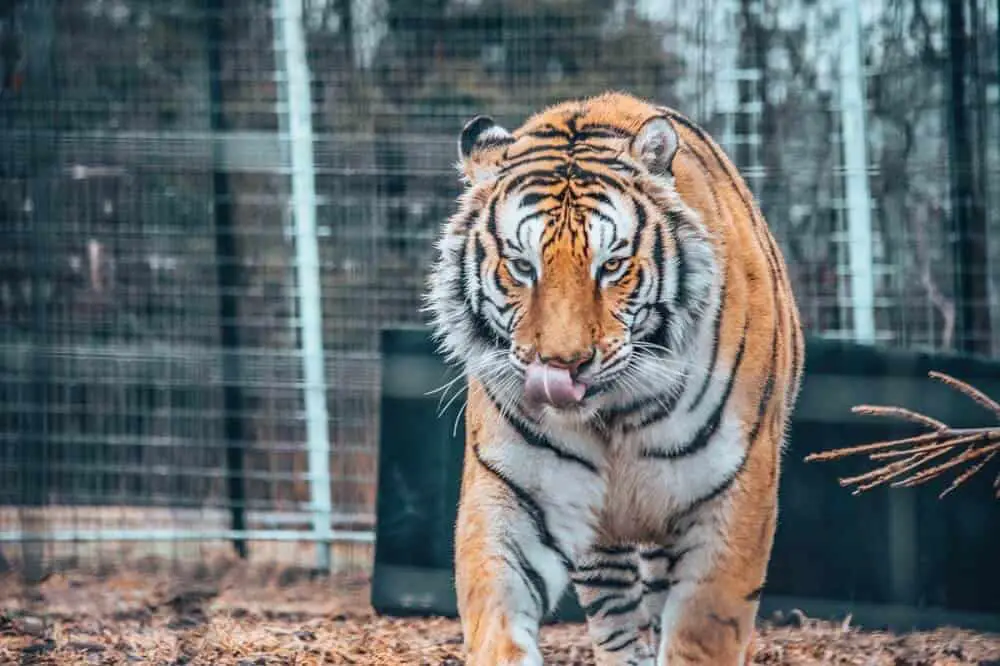
Aquariums
Aquariums are also a popular unethical animal tourism attraction.
I used to have a fish tank at home and loved looking at the fish swimming around. They all had names and their own personalities. I could stare at them for hours to end (Yes! I did talk to them too!). Unfortunately, I often experienced that my fish died. They got diseases and I don’t know what else killed them. I tried to do everything right for my little pets.
It wasn’t before I moved to Spain that I reconsidered if it was really ethical to have a heap of fish in a tank of 60 liters in my living room.
Probably not.
I will let Kristie from the family travel blog, Family Adventure Project tell you a bit more about aquariums and how to enjoy fish in other ways.
Visiting aquariums in Japan
By Kirstie from Family Adventure Project
I never hesitated to take my family to aquariums until a month-long visit to Japan seeking out things to do with kids. In our hotel room in Hiroshima one night, we watched the movie The Cove about the capture and killing of whales in the small town of Taiji. And as Taiji was relatively nearby we decided to go and stage a family protest.
It was eye-opening to see how a region celebrates the very animal it is exploiting. In resorts for miles around you can take a ride on a dolphin-shaped boat tourist trip or visit a whale museum where young dolphins and whales are separated from their families and trapped in tanks for the rest of their lives. And they are the ‘lucky’ ones. Others either have to survive the journey to aquariums in the west or are rounded up by boats and slaughtered for their meat.
How could an ordinary family change a massive industry and historical tradition in any way? Well, we bought some dolphin-shaped post-its, used the translate app on our phone and sticker bombed the town, telling locals and visitors alike to watch The Cove. Did we change the world? Nope, although I believe the sticker in the ladies loo stayed on the wall for quite some time. But we changed our kids; one of them is still vegetarian to this day and none of them would thank you for a visit to an aquarium.
Ethical ways to see fish
Make a vow to boycott any attractions with captive animals. Instead, watch the creatures in the wild. There are many ways to do this; we have gone whale watching in Iceland, New Zealand, and the US. DFDS Ferry has a great educational program on board some of the ferries; wildlife volunteers are often on hand in peak season to point out dolphins swimming in their natural habitat. You can join Sea Shepherd in Taiji as a volunteer to monitor the animals’ decline. Or if you are near an aquarium you could always buy some post-its and get creative!

You might also like: Unethical animal tourism and what to do instead: Marine life
Unethical animal sanctuaries
It can be hard to distinguish the good animal sanctuaries from the bad.
Often, the bad ones tell you fluffy stories that make you believe that you support an ethical business that cares for the animals while really, you are supporting a cruel behind-the-scenes business that only works for profit.
A good example is the last elephant sanctuary where I rode an elephant in Thailand. It was beautifully situated in the jungle. They educated us about the elephants, their stories and let us interact with them in an “ethical” way. We prepared food for them, fed them with bananas… and we went for a jungle trek on the elephants back before we bathed them.
For me at the time, this seemed like an incredible and ethical experience.
That was before I learned about why you shouldn’t ride elephants and what it takes to train an elephant.
There are many other animal sanctuaries taking advantage of unknowing tourists and many animals don’t handle to live in captivity.
Tarsiers, as an example, commit suicide while in captivity as they get stressed out by small enclosures and human contact. Still, there are sanctuaries that keep these animals in small places and let tourists hold them.
A good rule of thumb is to never go to animal sanctuaries where you can touch the animals.
I will let Melissa, founder of the family travel blog Thrifty Family Travels, tell you a bit more about her experience with posing with wildlife and what she recommends you do instead.

Posing with wild animals in South East Asia
By Melissa from Thrifty Family Travels
Having traveled to South East Asia many times, I’ve had lots of opportunities to participate in unethical animal tourism. One of these activities I’m now ashamed about was posing for a photo with wild animals such as tigers and bears in zoos.
Being a massive animal lover, I was super excited to get up close with these animals. However, I’ve since learned about what these poor animals go through in order to be calm enough to pose with humans for such photos.
Have repetitive handling from humans is very stressful for animals. I mean, you’ve seen the lineup for these photos – imagine that poor bear (or whatever animal it is) having to sit there for hours on end for these photos.
Plus, when you think about it, there is no way these wild animals can sit there so calm without being drugged Many animals are declawed or in some cases even having their teeth removed to prevent any serious incidents occurring. I’ve even heard of animals having their mouths wired shut!
Thinking about it now – it’s all common sense and I have no idea what I was thinking at the time!
Ethical ways to see wildlife
I now spend a lot of time researching a wildlife park before visiting to ensure the animals are well looked after. I’d only recommend visiting a wildlife park which is involved in conservation work and doesn’t use the animals for tricks, posing for photos or anything that is unnatural to the animals. In general, that means not visiting any zoos in South East Asia (or other places in the world).

Animal rides
Animal rides as tourist activities are just wrong. Sorry to pop that romanticized bubble!
A horse carriage tour around Havana might seem like the perfect way to see the Cuban capital. But hold on a little and think about the horse. It stands still in 40 degrees Celcius all day, often straight under the sun, when it doesn’t walk around the concrete roads. The animal is constantly exposed to noise and traffic, dragging around on tourists flashing their holiday photos.
In my home town in Spain, a horse collapsed last summer while pulling tourists around. The horse owners talked it away by saying that it’s normal, sometimes they just lay down. Really?!
A large number of horses pulling carriages with tourists collapse of exhaustion every year. Is this ok?
You might think it is ok to ride a donkey if it seems fit and healthy. But a large, healthy donkey shouldn’t carry more than 50 kilos including harness. I am pretty sure you are too heavy unless you are 9 years old.
But there are more reasons why you should stay away from any animal ride as a tourist. Be it donkeys, elephants, camels, horses, dolphins, or any other wildlife.
The locals sell you the ride because they need money. If you think the money goes to feeding the animals and their well-being, most of the time you are wrong. It is a way to get an income to the family which in itself is a good thing. Though the animals often suffer for the humans’ benefits.
Once it becomes an industry, there is no care for the animal anymore.
This is a big topic, and I have dedicated a whole post just to animal rides.
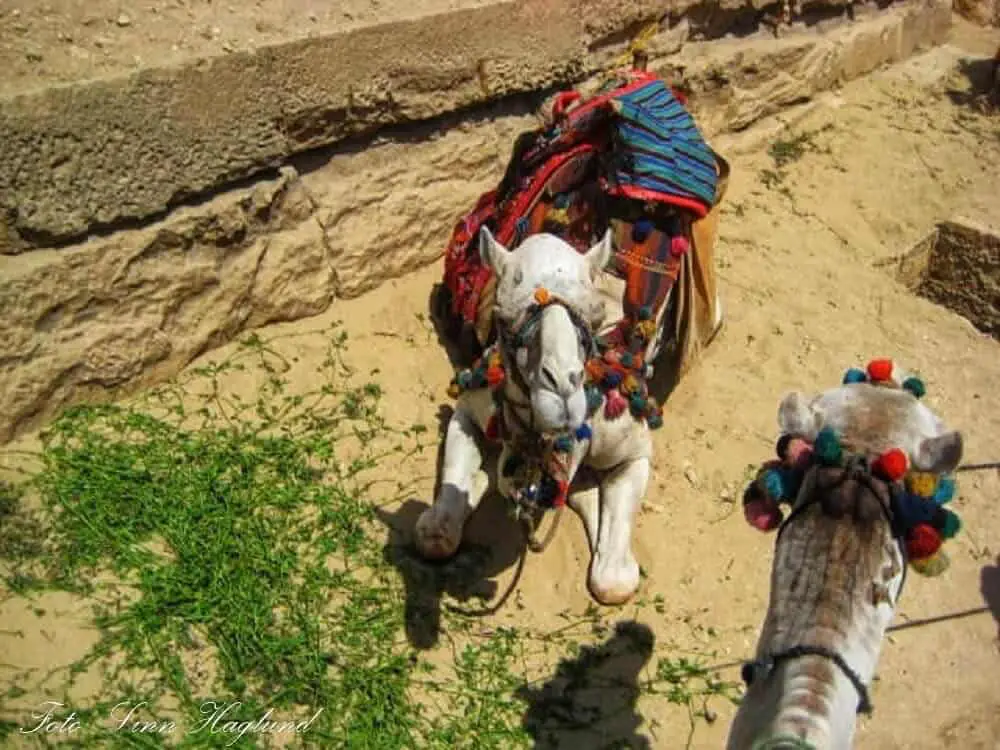
All tours/shows that include animals
As I mentioned before, it was perfectly normal to go to a circus with elephants and lions when I was a kid. Today, I’m pretty sure most of you would discard going to a circus with animals.
You see, there is no difference if the animal is performing in a circus tent or in the jungle in Thailand or Peru. It might seem more exotic and tour operators sell it in as a cultural experience, but is it that much difference?
The animals are still being trained to do things that are not natural to them for the amusement of tourists. This training may include different forms of torture like beating, starvation, declawing, separation from the rest of the herd, babies removed from their mothers and so on.
Animals are bred purely to satisfy tourism. So use your voice and stop feeding the industry by choosing tours that don’t support animal abuse.
Read the next post in the series unethical animal tourism and what to do instead: Land animals and birds
MAKE A DIFFERENCE FOR THE ANIMALS!
Plant trees to create habitat for animals from the convenience of your home
Conclusion
Well, I think we can agree that it isn’t always easy to decide if it is ethical or not when it comes to animal tourism. Though there are a few takeaways you easily can adopt straight away.
- Whatever you do, make sure you research, research, and research before you choose any form of animal activity when traveling.
- If you travel with a tour company, make sure it is a responsible one.
- Finally, the most important thing you can do is to follow common sense and listen to your gut. If your gut says “no” or “nah” then look for something else.
What are your thoughts on animal tourism? Is there anything else you think I should highlight in the article? Leave your comment below!
Pin it for later!
